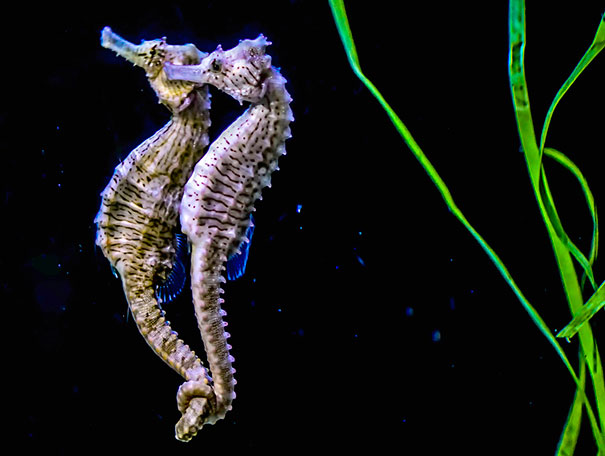
Birmingham: At a sea life center in Britain, a male seahorse is reported to have given birth to nearly hundreds of seahorse babies. The sea life center has been undertaking a conservation program to rescue, breeds and protect the vulnerable animal species.
During the breeding session, the ‘big bellied’ male seahorse incubates the females eggs for 25 days and give birth to their off-springs. They can carry up to a thousand eggs on one occasion, and this event is one of the only examples in the animal kingdom where males giving birth to smaller ones. The breeding event at the National Sea Life Center was observed under the leadership of scientist Rob Gaster. According to him the event was absolutely exciting and involved a lot of attractions.
These baby seahorses are now slowly developing and being cared in a specialist nursery tank so that they can keep a close watch on them.
They are sensitive creatures and the specialist team has been feeding them with microscopic food called rotifers which comprises of tiny shrimps and food which they have to grow by culturing. The center is a specialist in seahorse breeding, and has successfully developed nine species already.
Before the breeding, the seahorses carry out a complex courtship ritual, during which males and females may change color, swim side-by-side holding tails and spin in conjunction while this associated movement is referred as a ‘predawn dance. Then they eventually move into true courtship dance which can last around eight hours. The male seahorse is equipped with a pouch on front-facing, side of the tail. When mating, the female seahorse deposits up to 1,500 eggs in the male’s pouch.
The male carries the eggs for nine to 45 days until the seahorses are fully developed. Once the young ones are released into the water, the male’s role becomes over and he offers no further care and often mates again within hours or days during the breeding season.
In the wild, the tiny size of baby seahorses makes them vulnerable to attackers and strong ocean currents. Hence, only one in 20 are found survived to adulthood. This is the reason why the brood sizes needed to be so large.
Video on male seahorse which gives birth to tiny off-springs